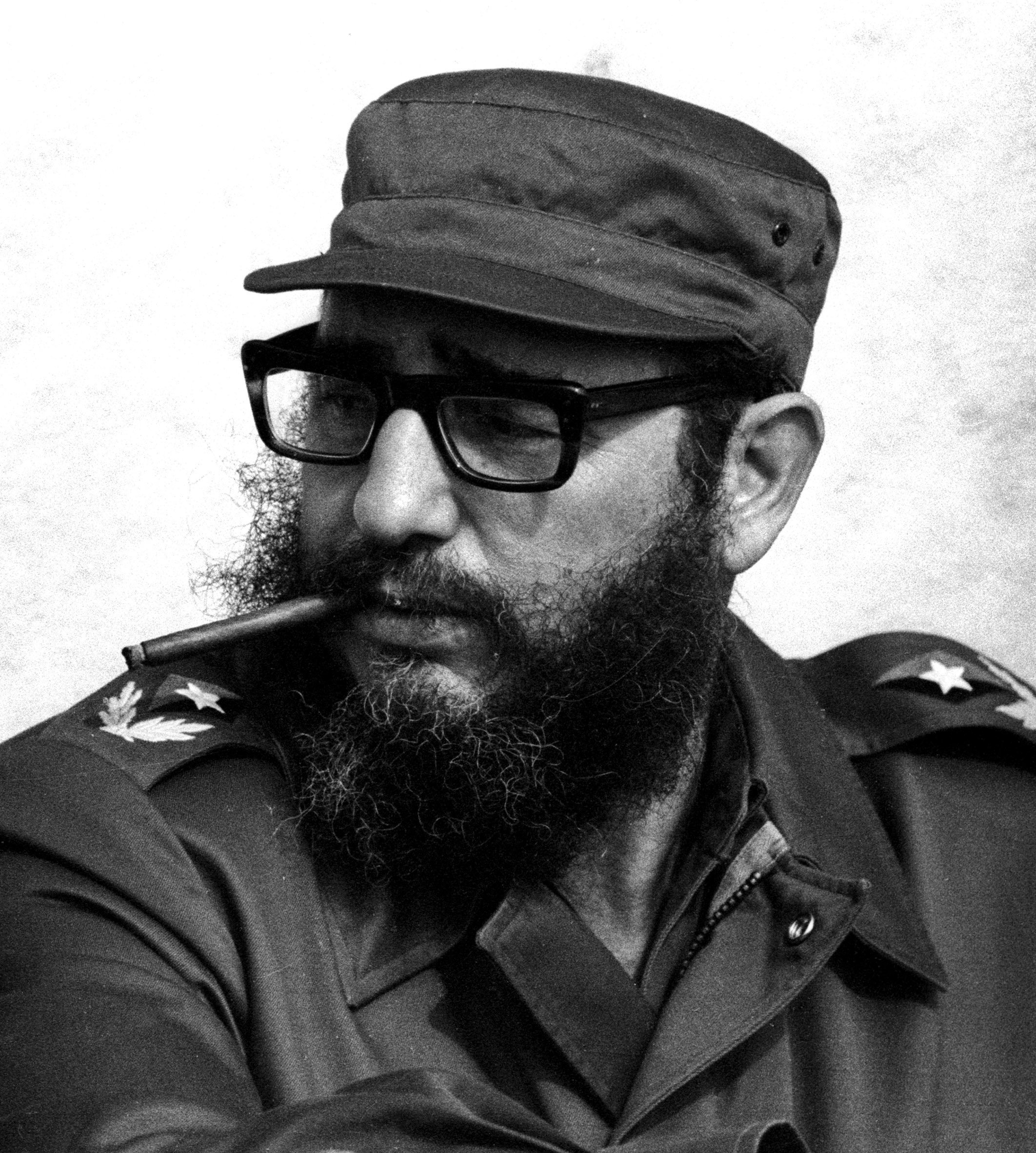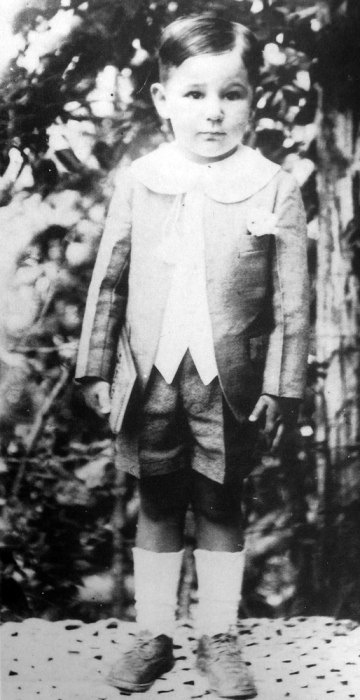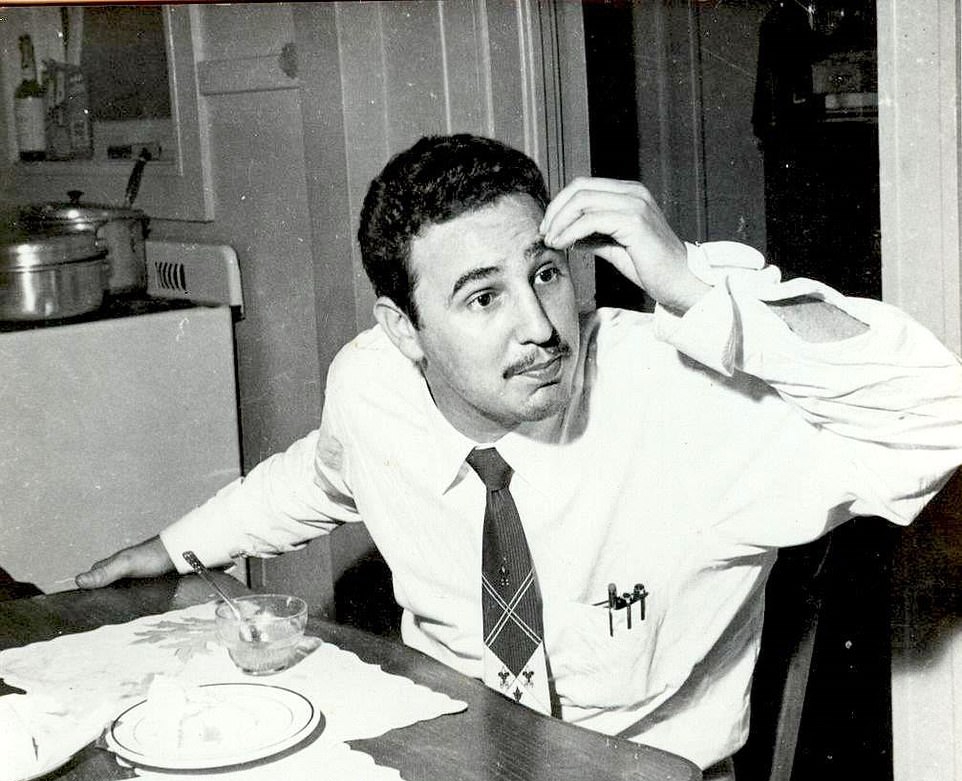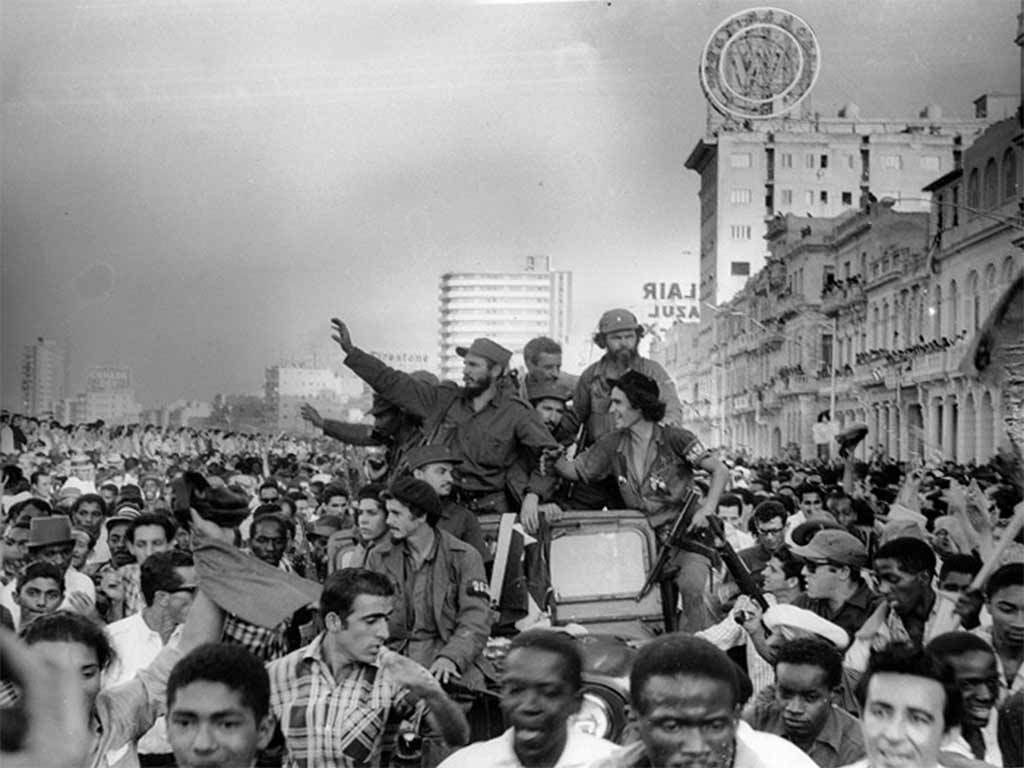More languages
More actions
(bluelinked coup) Tag: Visual edit |
(Categorisation) Tag: Visual edit: Switched |
||
| (3 intermediate revisions by 3 users not shown) | |||
| Line 33: | Line 33: | ||
Fidel Castro was born on August 13, 1926 in Birán in Oriente. His father was named Angel Castro Argíz and his mother was named Lina Ruz González. His father was a landowner.<ref name=":0">{{Web citation|author=Granma|newspaper=Granma|title=Fidel Castro Ruz|date=2019-11-01|url=https://en.granma.cu/hasta-la-victoria-siempre/2016-12-01/fidel-castro-ruz|retrieved=2023-07-09}}</ref> | Fidel Castro was born on August 13, 1926 in Birán in Oriente. His father was named Angel Castro Argíz and his mother was named Lina Ruz González. His father was a landowner.<ref name=":0">{{Web citation|author=Granma|newspaper=Granma|title=Fidel Castro Ruz|date=2019-11-01|url=https://en.granma.cu/hasta-la-victoria-siempre/2016-12-01/fidel-castro-ruz|retrieved=2023-07-09}}</ref> | ||
Castro initially attended a rural public school and later attended the schools of La Salle and Dolores in Santiago de Cuba. While living in Santiago de Cuba, he began to play baseball. He started playing while attending Cuqui Bosch Pre-university Institute between 1939 and 1940. This had an effect on his life throughout his adulthood as he continued to enjoy the sport.<ref>{{Web citation|author=Sigfredo Barros Segrera|newspaper=Granma|title=Fidel and baseball|date=2017-11-07|url=https://en.granma.cu/deportes/2017-12-07/fidel-and-baseball|retrieved=2023-07-12}}</ref> He then went to Dolores College and later, in 1942, attended the Jesuit Belén school. He graduated in June of 1945.<ref name=":0" /><ref>{{Web citation|newspaper=teleSUR|title=Fidel Castro: 96 Years of a Symbol of Dignity and Emancipation|date=2022-08-13|url=https://www.telesurenglish.net/news/Fidel-Castro-96-Years-of-a-Symbol-of-Dignity-and-Emancipation-20220813-0001.html|retrieved=2023-08-12}}</ref> | Castro initially attended a rural public school and later attended the schools of La Salle and Dolores in Santiago de Cuba. While living in Santiago de Cuba, he began to play baseball. He started playing while attending Cuqui Bosch Pre-university Institute between 1939 and 1940. This had an effect on his life and throughout his adulthood as he continued to enjoy the sport.<ref>{{Web citation|author=Sigfredo Barros Segrera|newspaper=Granma|title=Fidel and baseball|date=2017-11-07|url=https://en.granma.cu/deportes/2017-12-07/fidel-and-baseball|retrieved=2023-07-12}}</ref> He then went to Dolores College and later, in 1942, attended the Jesuit Belén school. He graduated in June of 1945.<ref name=":0" /><ref>{{Web citation|newspaper=teleSUR|title=Fidel Castro: 96 Years of a Symbol of Dignity and Emancipation|date=2022-08-13|url=https://www.telesurenglish.net/news/Fidel-Castro-96-Years-of-a-Symbol-of-Dignity-and-Emancipation-20220813-0001.html|retrieved=2023-08-12}}</ref> | ||
In September of 1945, he enrolled in the University of Havana to study Law, Social Sciences and Diplomatic Law. He joined many student groups while attending. These included the the Pro Puerto Rican Independence Committee, the Pro Democracy in the Dominican Republic Committee, the September 30 Committee, and the University Student Federation.<ref name=":0" /> | In September of 1945, he enrolled in the University of Havana to study Law, Social Sciences and Diplomatic Law. He joined many student groups while attending. These included the the Pro Puerto Rican Independence Committee, the Pro Democracy in the Dominican Republic Committee, the September 30 Committee, and the University Student Federation.<ref name=":0" /> | ||
| Line 68: | Line 68: | ||
=== After the Revolution === | === After the Revolution === | ||
[[File:Entrada-de-Fidel-a-La-Habana.jpg|thumb|Castro and the 26th of July Movement enter the streets of [[Havana]] on January 8, 1959]] | [[File:Entrada-de-Fidel-a-La-Habana.jpg|thumb|Castro and the 26th of July Movement enter the streets of [[Havana]] on January 8, 1959]] | ||
Castro became Prime Minister of the Revolutionary Government on February 13, 1959. In this position he lead a great deal of | Castro became Prime Minister of the Revolutionary Government on February 13, 1959. In this position he lead a great deal of accomplishments. He led the Cuban victory against the US invaders during the [[Bay of Pigs invasion]]. He also successfully led the country through the 1962 October Crisis, also known as the [[Cuban Missile Crisis]].<ref name=":0" /> | ||
On April 16, 1961, Castro declared the Cuban Revolution to be [[socialist]] in nature. After this, he led the Integrated Revolutionary Organizations and the United Party of the Socialist Revolution of Cuba. He became the First Secretary of the Central Committee of the Communist Party of Cuba. He later became the President of Cuba's Councils of State and Ministers.<ref name=":0" /> On December 2, 1961, Castro declared himself a [[Marxism–Leninism|Marxist–Leninist]]. | On April 16, 1961, Castro declared the Cuban Revolution to be [[socialist]] in nature. After this, he led the Integrated Revolutionary Organizations and the United Party of the Socialist Revolution of Cuba. He became the First Secretary of the Central Committee of the Communist Party of Cuba. He later became the President of Cuba's Councils of State and Ministers.<ref name=":0" /> On December 2, 1961, Castro declared himself a [[Marxism–Leninism|Marxist–Leninist]]. | ||
| Line 82: | Line 82: | ||
==References== | ==References== | ||
<references /> | <references /> | ||
[[Category: | [[Category:1926 births]] | ||
[[Category: | [[Category:2016 deaths]] | ||
[[Category:Cuban anti-capitalists]] | |||
[[Category:Cuban anti-imperialists]] | |||
[[Category:Cuban communists]] | |||
[[Category:Cuban guerrillas]] | |||
[[Category:Cuban Marxists]] | |||
[[Category:Cuban Marxist–Leninists]] | |||
[[Category:Cuban nationalists]] | |||
[[Category:Cuban revolutionaries]] | |||
[[Category:Communist leaders]] | [[Category:Communist leaders]] | ||
[[Category:Featured page]] | |||
[[Category:Former heads of government]] | |||
[[Category:Former heads of state]] | |||
[[Category:Presidents of the Council of Ministers of Cuba]] | |||
[[Category:Presidents of the Republic of Cuba]] | |||
[[Category:Targets of intelligence operations]] | [[Category:Targets of intelligence operations]] | ||
Latest revision as of 21:00, 28 October 2024
El Comandante Fidel Castro | |
|---|---|
 Portrait of comrade Fidel | |
| Born | Fidel Alejandro Castro Ruz August 13, 1926 Birán, Cuba |
| Died | November 25, 2016 (aged 90) Havana, Cuba |
| Cause of death | Natural causes |
| Nationality | Cuban |
| Political orientation | Marxism–Leninism Anti-imperialism |
| Political party | Communist Party of Cuba |
Fidel Alejandro Castro Ruz (August 13th, 1926 — November 25th, 2016) was a Cuban Marxist–Leninist revolutionary and a leader of the Cuban Revolution, alongside Che Guevara, his brother Raúl, and others. He served as Prime Minister of Cuba from 1959 to 1976 and President from 1976 to 2008. He also served as the First Secretary of the Communist Party of Cuba from 1965 until 2011.
A sympathizer of the Cuban People's Party (Orthodox), he actively participated in the party's campaigns and was one of the first to denounce the reactionary and illegitimate nature of the de facto regime established after the coup d'état by Fulgencio Batista on March 10, 1952.[1]
He was imprisoned after the assaults on the Moncada barracks in Santiago de Cuba and the Carlos Manuel de Céspedes barracks in Bayamo, assuming his self-defense before the court that tried him, and pronouncing the plea known as "History Will Absolve Me", in which he outlined the program of the future Revolution in Cuba.[2]
Sentenced to 15 years in prison, he was amnestied in 1955 and went into exile in Mexico, from where he left with 81 other revolutionaries to disembark at Los Coyuelos on December 2, 1956. After several years of hard struggle, he entered victorious on January 1, 1959 in Santiago de Cuba and arrived in Havana on January 8.
On February 16, 1959, he was appointed Prime Minister of the Revolutionary Government. On December 2, 1976, he was elected President of the Councils of State and Ministers of the Republic of Cuba, a position he held until his resignation due to health problems on February 24, 2008.[3]
In 1992, Castro warned that climate change was an existential threat to the human species[4]
“An important biological species is at risk of disappearing due to the rapid and progressive liquidation of its natural living conditions: man”
Life[edit | edit source]
Early Life[edit | edit source]

Fidel Castro was born on August 13, 1926 in Birán in Oriente. His father was named Angel Castro Argíz and his mother was named Lina Ruz González. His father was a landowner.[5]
Castro initially attended a rural public school and later attended the schools of La Salle and Dolores in Santiago de Cuba. While living in Santiago de Cuba, he began to play baseball. He started playing while attending Cuqui Bosch Pre-university Institute between 1939 and 1940. This had an effect on his life and throughout his adulthood as he continued to enjoy the sport.[6] He then went to Dolores College and later, in 1942, attended the Jesuit Belén school. He graduated in June of 1945.[5][7]
In September of 1945, he enrolled in the University of Havana to study Law, Social Sciences and Diplomatic Law. He joined many student groups while attending. These included the the Pro Puerto Rican Independence Committee, the Pro Democracy in the Dominican Republic Committee, the September 30 Committee, and the University Student Federation.[5]
During 1947, Castro signed up to fight against the Dominican dictator Rafael Leónidas Trujillo. Those involved were caught by the Cuban Navy with Castro escaping capture by jumping into the water.[5]
After becoming introduced to Marxism, he traveled to Colombia, Panama, and Venezuela to start a Latin American Student Congress. While in Bogotá, he became involved in the civil war.[5]
He graduated in 1950 with a PhD in Civil Law and a bachelor's degree in Diplomatic Law.[5]
Pre-Granma Yacht Period[edit | edit source]

On March 10, 1952, fascist Fulgencio Batista, with U.S.-backing, took control of the country, becoming a military dictator. Castro opposed him and along with 160 others attacked the the Moncada Garrisons in Bayamo and Santiago de Cuba on on July 26, 1953. Their revolt failed and Castro was sentenced to 15 years in prison. His defense he gave became known as the "History Will Absolve Me" speech.[5]
Due to pressure from the populace, Castro was released in May of 1955. Following this, he founded the 26th of July Movement.[5]
In July of 1955, Castro left the country for Mexico to start a resistance group. While in Mexico, he and many other future leaders of the Cuban Revolution, like Raúl Castro, Che Guevara, Manuel Márquez, Camilo Cienfuegos, and Juan Almeida Bosque, underwent training.[5]
Fidel Castro traveled to the United States of America during this time period and gathered support for his revolution in cities like Bridgeport, Miami, New York City, Philadelphia, Tampa, and Union City.[5]
Some of the members of the 26th of July Movement in Mexico were caught and eventually released from prison. They lost some of their weapons to the police.[5]
Granma Yacht Expedition[edit | edit source]
After purchasing the Granma Yacht, they departed from Tuxpan, Mexico on November 25, 1956 with 82 soldiers on board. They arrived in Cuba on December 2, 1956 at Las Coloradas in southwestern Oriente.[5]
In the expedition, Castro was the Commander in Chief and lead the José Martí Column One.[5]
On December 5, 1956, the group was attacked by Batista's military in Alegría de Pío. Fidel and Raúl Castro reunited in Cinco Palmas. They then departed for the Sierra Maestra mountains.[5]
The expedition attacked the Plata Garrison and won against the army on January 17, 1957.[5]
The expedition ended on December 28, 1958 when the Batista army recognized the rebels' victory in Oriente. A coup against Castro was put down on January 1, 1959. Castro entered Havana on January 8, 1959.[5]
After the Revolution[edit | edit source]

Castro became Prime Minister of the Revolutionary Government on February 13, 1959. In this position he lead a great deal of accomplishments. He led the Cuban victory against the US invaders during the Bay of Pigs invasion. He also successfully led the country through the 1962 October Crisis, also known as the Cuban Missile Crisis.[5]
On April 16, 1961, Castro declared the Cuban Revolution to be socialist in nature. After this, he led the Integrated Revolutionary Organizations and the United Party of the Socialist Revolution of Cuba. He became the First Secretary of the Central Committee of the Communist Party of Cuba. He later became the President of Cuba's Councils of State and Ministers.[5] On December 2, 1961, Castro declared himself a Marxist–Leninist.
He was required, due to his declining health, to step down as the President of Cuba's Councils of State and Ministers in 2006 and stepped down as the First Party Secretary in 2011.[5]
Failed Assassination Attempts[edit | edit source]
The Cuban security services have documented after investigations over 600 attempts to murder Fidel Castro up until the year 2007.[8] These failed attempts by the CIA, directly or indirectly, had many methods. Some of the many attempts included: Snipers, explosives placed in his shoes, explosives inside a baseball, and poison injected into a cigar.[9]
Castro and his will regarding his memory[edit | edit source]
On December 27, 2016, the Law on the use of the name and figure of Fidel Castro Ruz in respect of his will, as expression of the political ethics that always accompanied him an expression of the humility and modesty that characterized him, and having always honored Marti's preaching that "all the glory of the world fits in a grain of corn", that his name will not be used to name institutions, squares, parks, avenues, streets and other public places, nor will monuments, busts, statues, commemorative plaques and other be erected in his memory.[10]
References[edit | edit source]
- ↑ La Historia me absolverá. F.Castro Ruz...[et.al.] -Ediciones Colihue SRL, 1993. -p156. ISBN 9505818041.
- ↑ Fidel Castro (1955). History will absolve me.
- ↑ «Proclama del Comandante en Jefe al pueblo de Cuba» http://www.cuba.cu/gobierno/discursos/2006/esp/f310706e.html
- ↑ "Fidel Castro Warned Us Of Climate Change" (2019-08-08). Qcostarica.
- ↑ 5.00 5.01 5.02 5.03 5.04 5.05 5.06 5.07 5.08 5.09 5.10 5.11 5.12 5.13 5.14 5.15 5.16 5.17 5.18 Granma (2019-11-01). "Fidel Castro Ruz" Granma. Retrieved 2023-07-09.
- ↑ Sigfredo Barros Segrera (2017-11-07). "Fidel and baseball" Granma. Retrieved 2023-07-12.
- ↑ "Fidel Castro: 96 Years of a Symbol of Dignity and Emancipation" (2022-08-13). teleSUR. Retrieved 2023-08-12.
- ↑ Fabián Escalante (2016-07-25). "Objetivo: Fidel" Cuba Debate. Archived from the original on 2022-12-22. Retrieved 2023-03-06.
- ↑ "Fidel, la persona que más veces intentaron matar" (2011-12-15). Cuba Debate. Archived from the original on 2021-06-09. Retrieved 2023-03-06.
- ↑ Parliament approves a law on the use of the name and figure of Fidel Castro Ruz http://www.cubadebate.cu/noticias/2016/12/27/presentan-proyecto-de-ley-sobre-el-uso-del-nombre-y-la-figura-del-companero-fidel-castro-ruz/#.WGPAXScffEw
